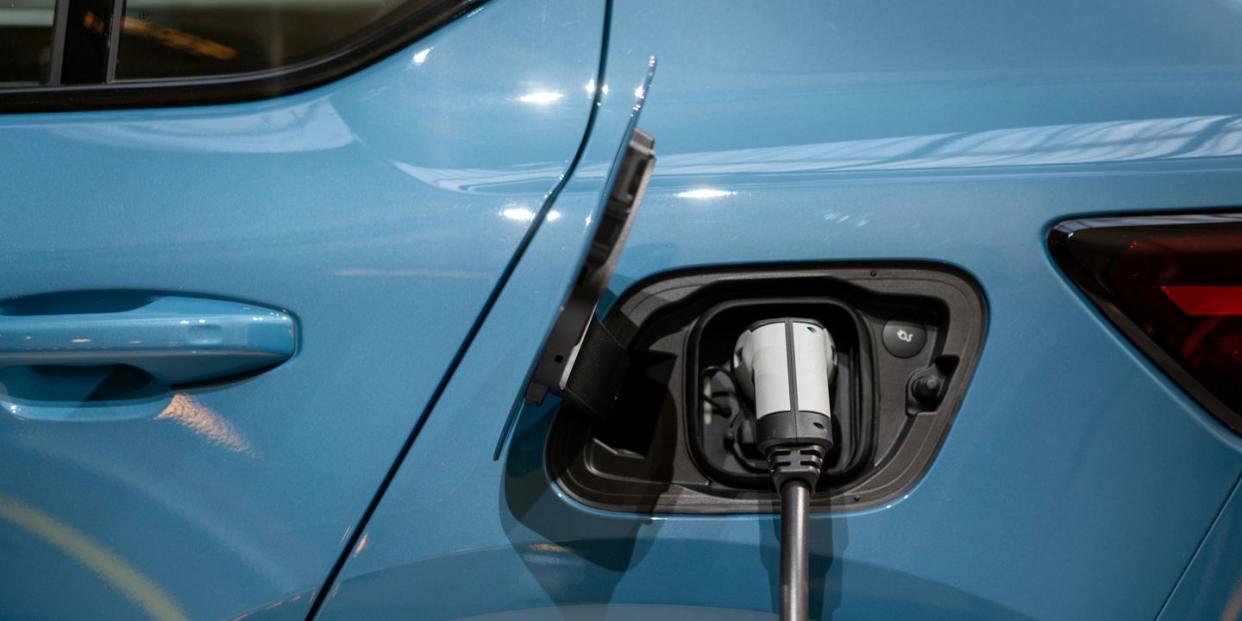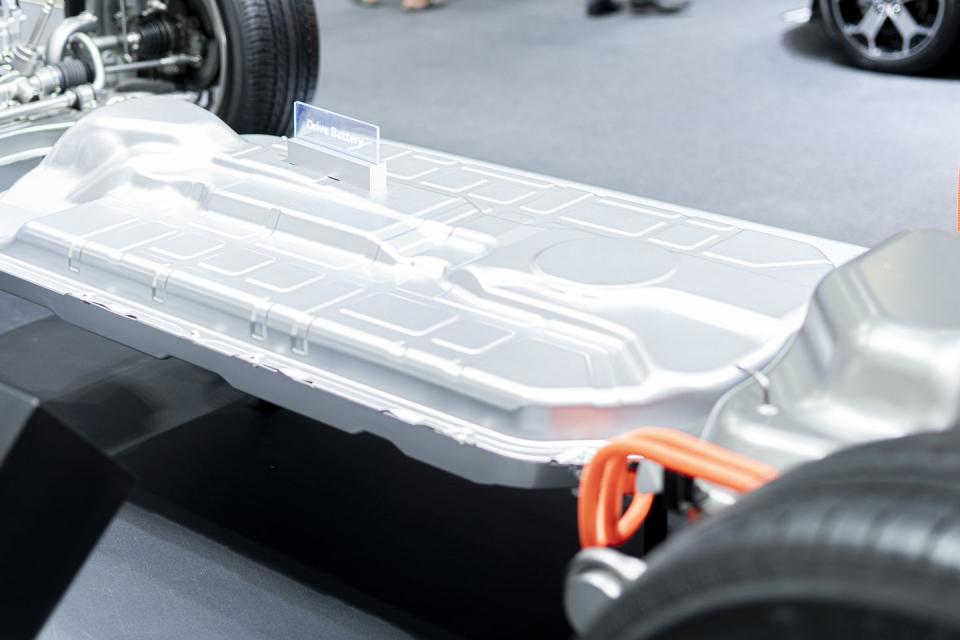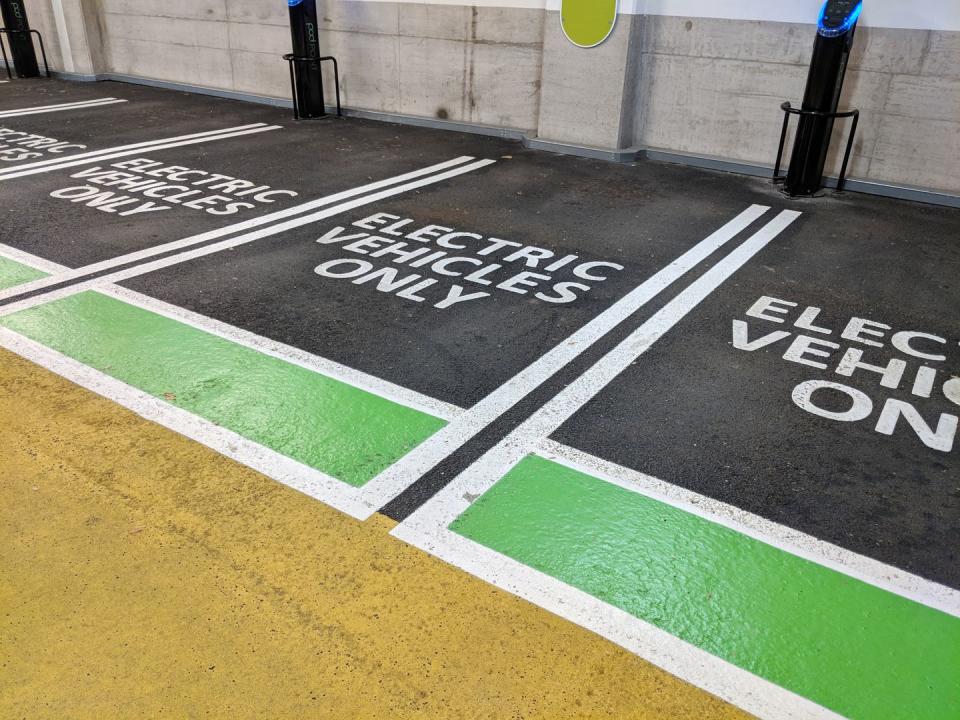Know These Seven Terms and You'll Be an Electric-Vehicle Expert

New words and concepts are a part of any new automotive technology; remember when you had to explain what a turbo was? Gas-powered cars have been around so long that almost everyone understands the key terms that enable us to compare everything from horsepower to fuel economy to the number of gallons the gas tank can hold. EVs are different—very different—from gas cars and still new enough that some of the terminology used to compare them isn't well understood. We're here to help you become an EV expert.
From energy storage to high-voltage electronics, here's our guide to the seven terms you need to know to understand the key elements of EVs and to talk as confidently about them as you do conventional cars.
Battery Pack

An EV's battery is made up of modules, which are essentially boxes of many individual cells that have been wired together. The modules are then connected to one another to form the battery pack. The pack is usually housed in a large metal box with connectors for both current flow and cooling liquid—which is required to keep it in the optimum operating range. It may weigh as much as a half ton or more. In most EVs the pack is almost as wide as the car, runs under the passenger compartment from the front to the rear axle, and is less than a foot high. That large amount of mass down low gives many EVs a low center of gravity that aids handling.
Power
Electrical power is measured in kilowatts (one kilowatt is equal to 1000 watts); the abbreviation is kW. To get an idea of how much energy that is, consider that those old incandescent light bulbs were 60, 75, or 100 watts. One kilowatt is equivalent to 1.34 horsepower, so an EV motor rated at 100 kW has 134 horsepower. Most manufacturers convert their propulsion systems' power output from kW to horsepower to make it more easily understood by shoppers. If by chance they don't, we do so in our spec panels.
Battery Capacity
Think of a vehicle's battery pack as its gas tank: it's where the energy is stored. The energy capacity of a battery is measured in kilowatt-hours (kWh), which is how much power, in kilowatts, can be delivered over a period of time, in hours. For instance, a battery with a capacity of 80 kWh can deliver 80 kW—107 horsepower—for an hour. That may not sound like much, but today's vehicles use only a fraction of their available power to move themselves in normal traffic. That's why that same car can drive for many hours and miles on its 80-kWh battery before needing to recharge. While this same example pack could also theoretically make 800 kW (1073 hp) for six minutes, there are physical and chemical limits on how much peak power a battery can make. In fact, an EV's peak horsepower is typically limited by how much power the battery can flow, not the limitations of the motors.
EPA Range
The EPA's estimated range number for how far an EV can travel on a single charge comes from exactly the same scienced-out laboratory test that has been applied to gasoline cars for decades. Vehicles are put onto a chassis dynamometer that replicates road driving conditions and run at required speeds for specific amounts of time. The number on the window sticker is the "combined" figure that is based on 55 percent of the "city" result and 45 percent from the "highway" test. EVs are much more energy-efficient at lower speeds, so in real-world driving they will generally exceed their range rating around town but fall short of it at highway speeds. We've confirmed the latter on our 75-mph highway test. The EPA range numbers can be found both on the EPA's website, fueleconomy.gov, and on the window stickers of new EVs.
Efficiency
More than 10 years ago, the EPA wanted to come up with a way to show how efficient EVs are compared to gasoline cars. It created MPGe—which stands for miles per gallon equivalent—that is directly comparable to a gas vehicle's mpg number on an energy basis, by dividing the energy the EV uses by the typical amount contained in one gallon of gasoline (33.7 kWh). EVs use energy much more efficiently than gas vehicles. A typical compact EV SUV might deliver a 95 MPGe combined number, while a gas equivalent of similar performance could easily be down in the 22-mpg combined range. You'll see the EPA combined/city/highway MPGe numbers in the spec panel of every EV we test, but in truth this is not a term that has caught on in the real world, and it is rarely cited.
Alternatively, some veteran EV drivers measure efficiency in how many miles they get from 1 kWh of battery capacity. A good rule of thumb is that, in mixed driving, expect roughly three miles per kWh—though as they say, your mileage may vary.
Charging Rate
This one is complicated but valuable to know nonetheless. Just as a battery delivers power at a given rate of kilowatts over time it can be recharged at a given rate as well. The charging rate depends on three components, all of which may have different charging levels: the battery's maximum charge rate (controlled by the car's power electronics), the amount of power the onboard charger can accept, and the power level of the charging equipment.
Today, most EVs cover most of their miles on home recharging, which usually takes place at night; some drivers can also charge their EVs at work during the day. Both types of recharging are done via AC charging either at Level 1—the standard North American 120-volt wall socket—or the more powerful Level 2, via a dedicated home charging station with its own 240-volt circuit.

Level 1 charging moves at glacial speed; it will add roughly two to three miles of range per hour. Level 2 charging can add up to 25 miles per hour depending on the rating of the car's onboard charger, which can vary from 3.3 to 19.2 kW. The math is pretty simple: an 80-kWh battery charging at 8.0 kW could be replenished from completely empty to full in about 10 hours, although you have to add about 10 percent to that figure to account for losses that happen during the charging process.
The quickest way to add range is to hook up to a DC fast charger if your EV has that capability; almost all new models do. These powerful fast chargers are the kind you can only access in public locations; you can't install a DC fast-charging station at home. Older EVs could accept DC charging at up to 50 kW, but newer models can handle at least 100 kW, often 150–200 kW—and a few can accept up to 350 kW for a short period.
Those charging rates aren't sustained through the entire charging cycle, though, meaning a car capable of charging at 350 kW may only charge at that quick rate when the battery is almost depleted, and only for 10 to 20 percent of the recharge cycle. Beyond that point it will start to slow the charging rate to protect the battery, since fast charging produces a lot of heat—the enemy of battery life. Note also that DC fast charging gets quite slow above 80 percent battery capacity; as on your mobile phone, that last 20 percent may take as long as the entire rest of the charge. Many EV drivers stop the DC fast charge when the battery reaches that level; some charging networks even end the charging session automatically at 80 percent.
Motor
This one is easy and the most fun, because it's where the ponies live. Virtually every EV has either one, two or, in rare cases, three or even four electric motors powering the wheels. It's common for mainstream EVs to offer base models with one motor powering the rear wheels and more expensive models with an additional motor powering the front axle—though for some models it's just the opposite; the base model could be a front-driver. EV motors are just bigger, tougher, and more powerful versions of the many smaller motors in gas cars that power everything from seats to rear hatches. There are three major types, but they all produce the same effect: they take juice from the battery and use it to power the wheels. Electric motors tend to make maximum torque at zero rpm, literally the moment they start to spin, which is why they feel so responsive off-the-line and at almost any vehicle speed compared to gasoline engines. They also make tremendous power for their physical size compared to internal combustion engines.
You Might Also Like

 Yahoo News
Yahoo News 
